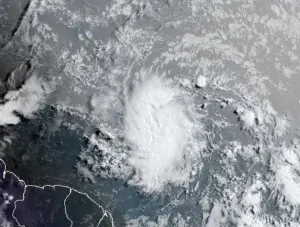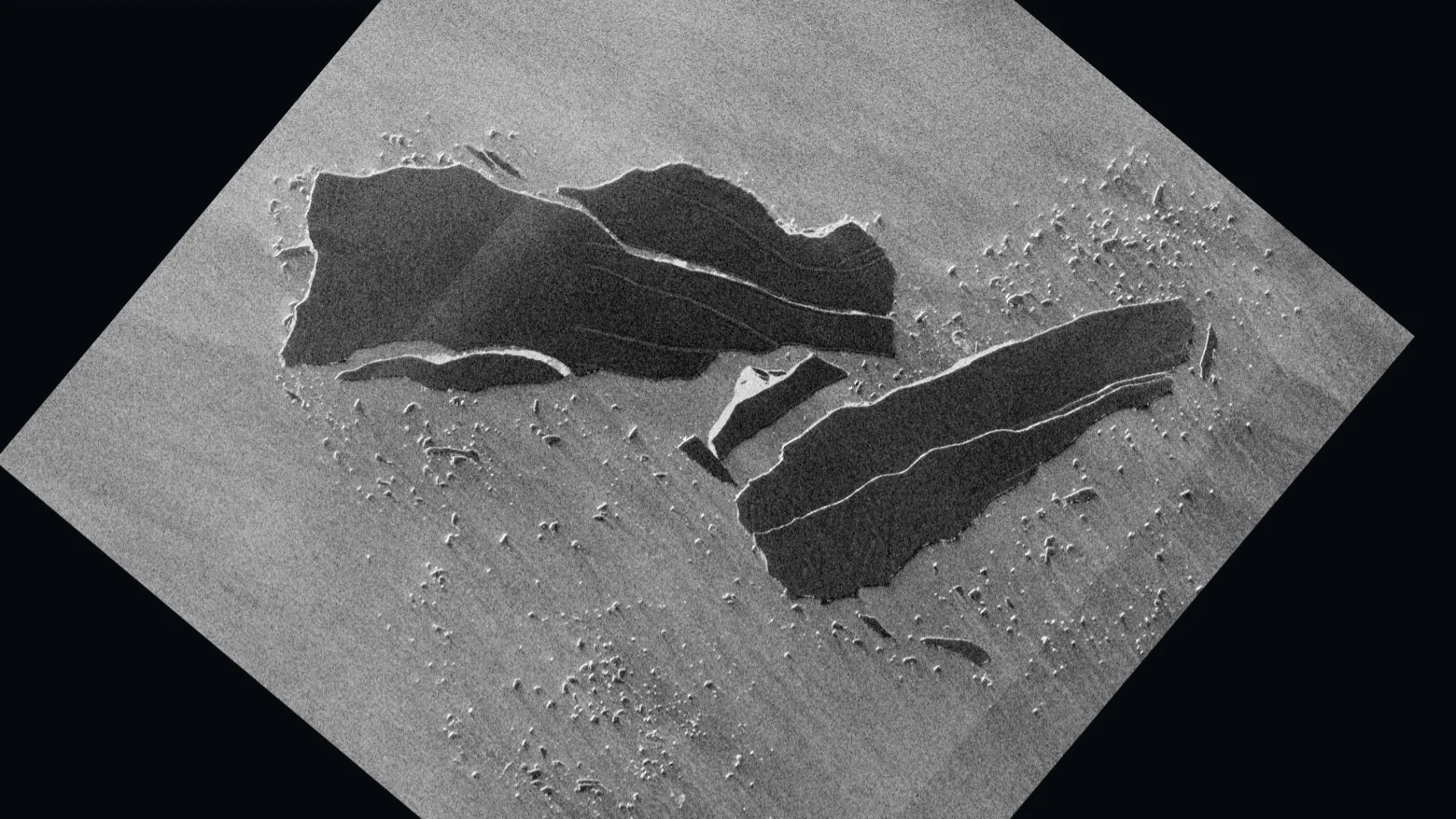
New satellite pics reveal iceberg A-68 shattered and scattered
Good news for the wildlife haven of South Georgia Island, as A-68 is likely no longer a threat.
What was once one of the largest icebergs in the world is now scattered in multiple pieces around South Georgia island.
In July of 2017, a massive iceberg broke off from the leading edge of Antarctica's Larsen C ice shelf. Roughly the size of Prince Edward Island at the time, it was given the name A-68 by the US National Ice Center. Within days that was amended to A-68a, after a large chunk broke away from one end (A-68b). Drifting out into the Weddell Sea and then the Southern Ocean, A-68a managed to stay intact for over two-and-a-half years until A-68c calved off in February of 2020. Since then, it has only taken another year for the iceberg to shatter into nearly a dozen more pieces.

The positions of A-68 icebergs, from its calving in July of 2017 to its fractured form surrounding South Georgia island on February 1, 2021. Credit: ESA
The end for this immense chunk of glacial ice began as it approached the island of South Georgia in December 2020. Scientists were initially concerned that the iceberg would ground itself on the island's shelf and potentially devastate the local wildlife population. By mid-December, however, A-68a had deflected off the shelf and was carried off to the south by the current.
The impact took its toll, though, and the breakup of A-68a began. First, A-68d broke away, sticking close to the island. Then the leading edge of the iceberg split into A-68e and A-68f.
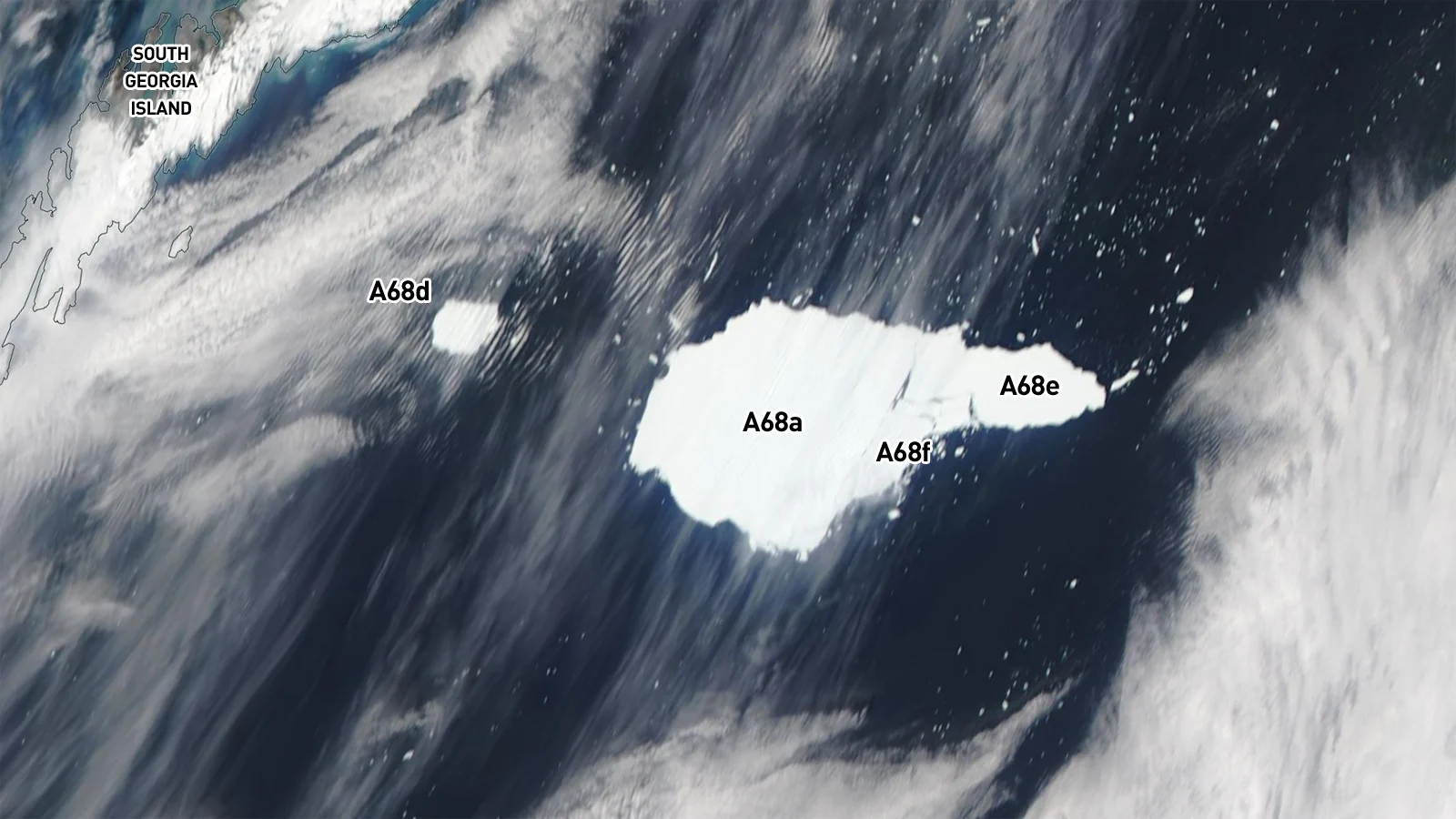
This closeup of A-68 and its lost fragments was captured by NASA's polar-orbiting Aqua satellite on December 22, 2020. Credit: NASA Worldview
With these pieces drifting away from each other, A-68e swung around South Georgia on the currents, while A-68f broke into smaller pieces. A-68a managed to hang on for over a month longer.
Then, on January 28, the next breakup event occurred, as the US National Ice Center logged A-68g, as spotted in Copernicus Sentinel satellite imagery. This apparently set off a chain reaction through the days ahead. On January 30, A-68h, A-68i, A-68j, A-68k and A-68l joined it.
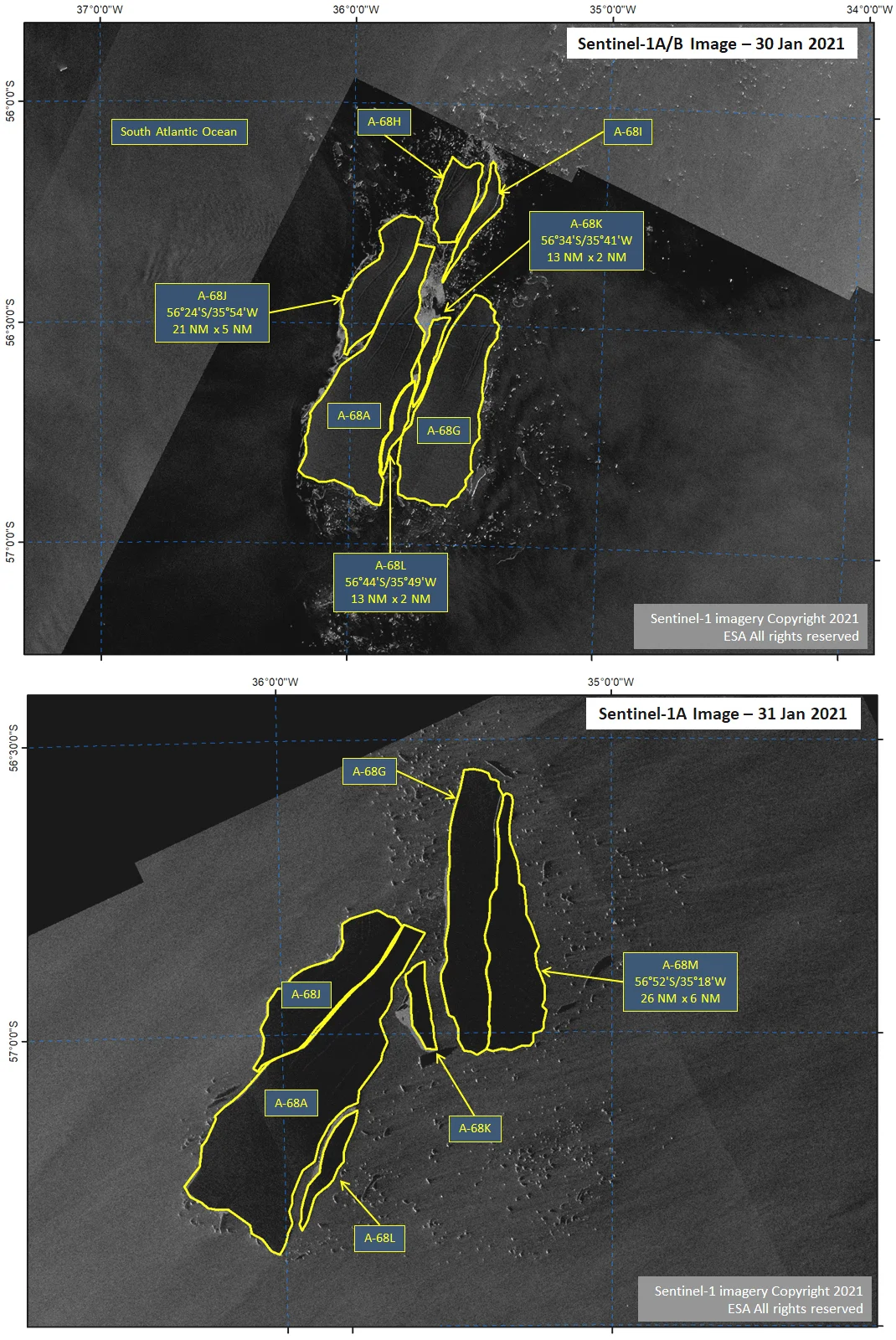
Iceberg A-68 fragments on January 30-31, 2021. In the second image, A-68h and A-68i have drifted out of the field of view. Credit: Sentinel-1A/B Imagery via ESA/US National Ice Center
Just one day later, radar imagery from the Sentinel 1A satellite revealed A-68g floating away from the cluster and fracturing once again to produce A-68m.
With the primary, A-68a, just a fraction of its original size now, and the smaller pieces continuing to fragment, this iceberg is not likely to last much longer.
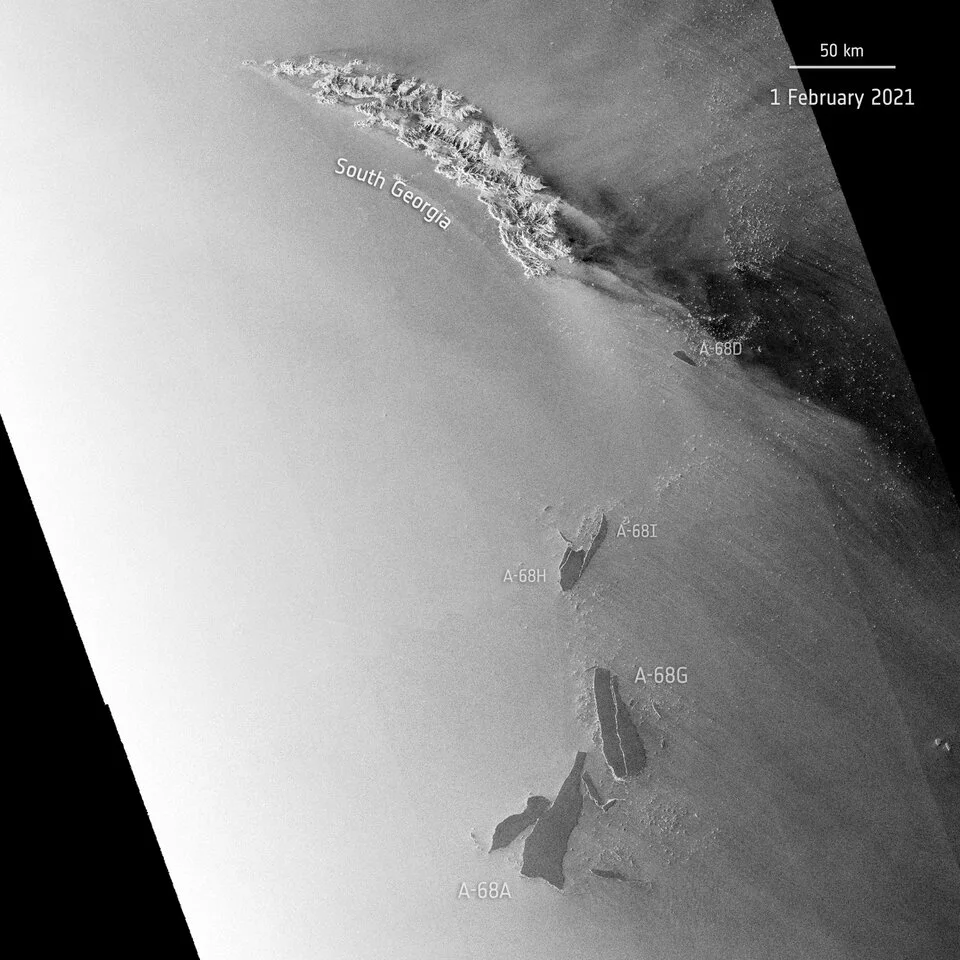
The state of A-68 as of February 1, 2021, as revealed by the Sentinel-1 mission. Credit: ESA
In the latest imagery from space, the shattered and scattered iceberg appears to be drifting apart.
In an Instagram post on February 7, 2021, the ESA wrote: "The main A-68A iceberg, once the world's largest, now measures only around 60 km in length with a maximum width of 22 km. The collective group of icebergs appear to be drifting apart, with the A-68H moving northwards, approximately 130 km from South Georgia. As of today, the main A-68A iceberg appears to be moving south and is currently around 225 km from South Georgia. This latest calving event could indicate that the bergs will most likely travel away from the island, no longer threatening the island's wildlife."
In a video animation included in the post, February 1 is labelled as iceberg A-68's "final breakup".








